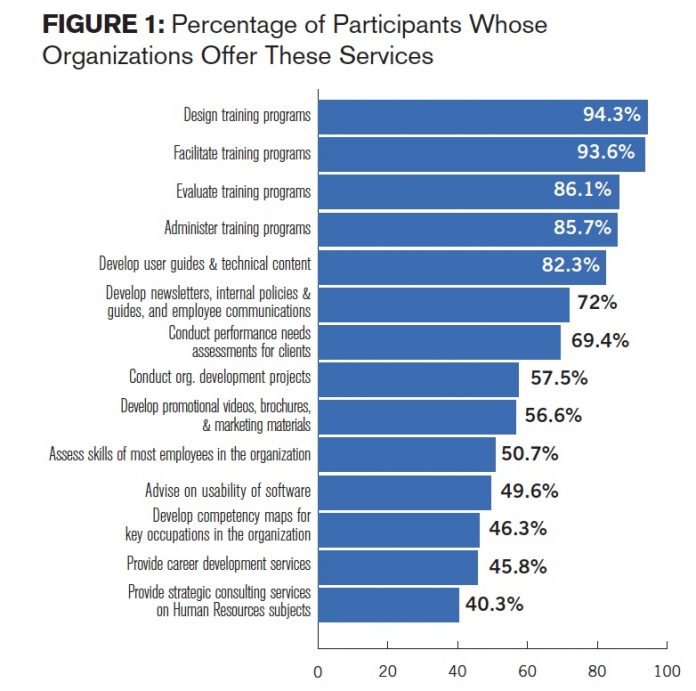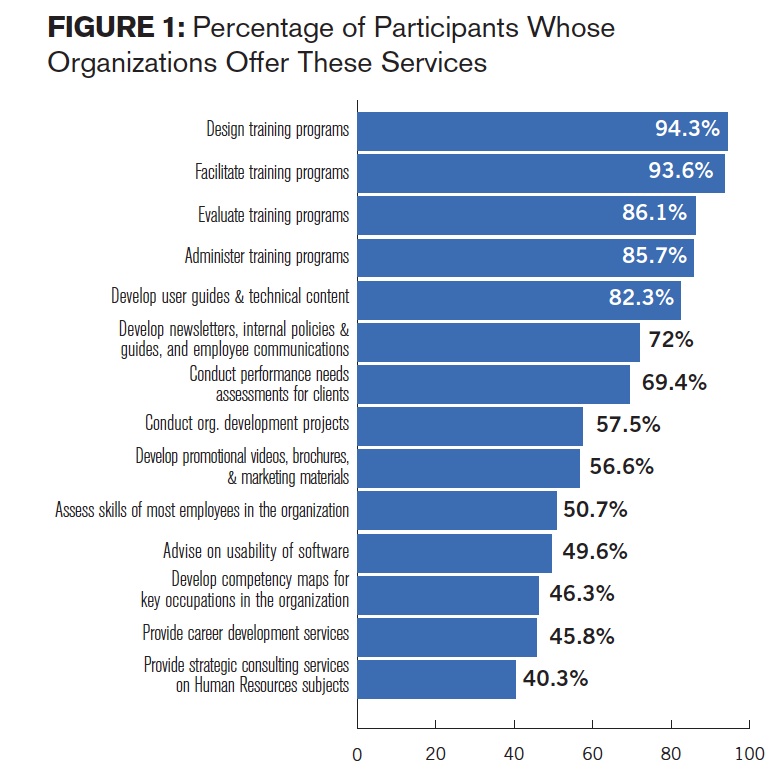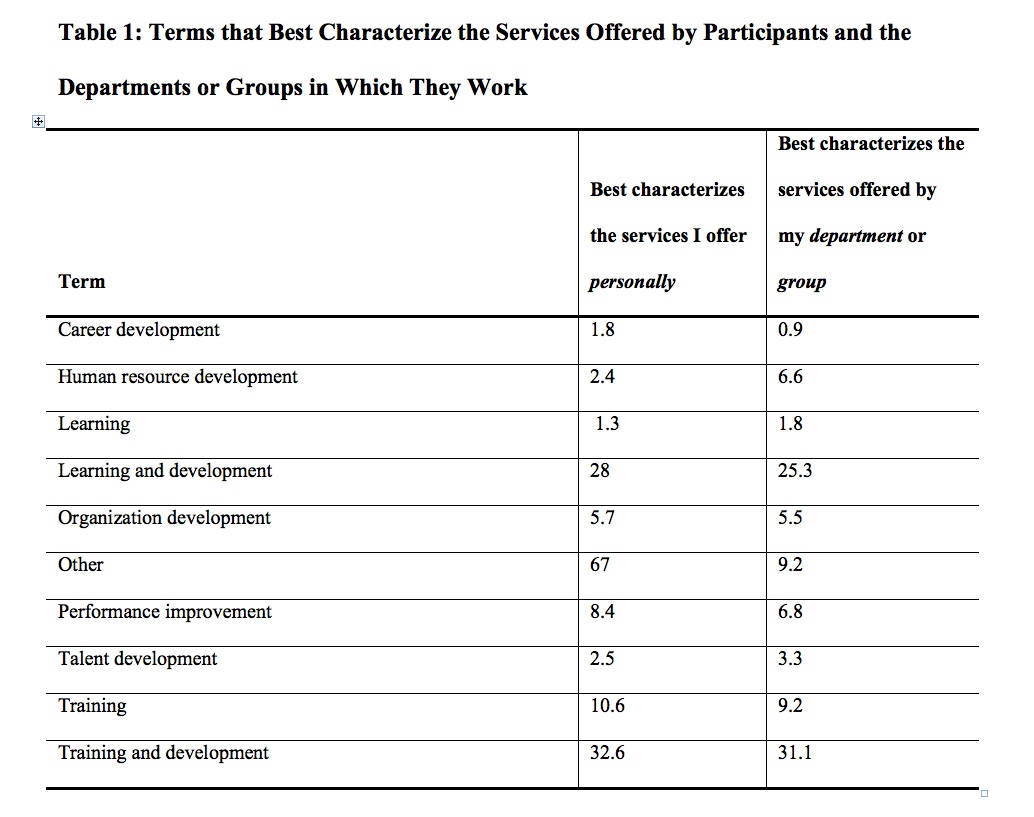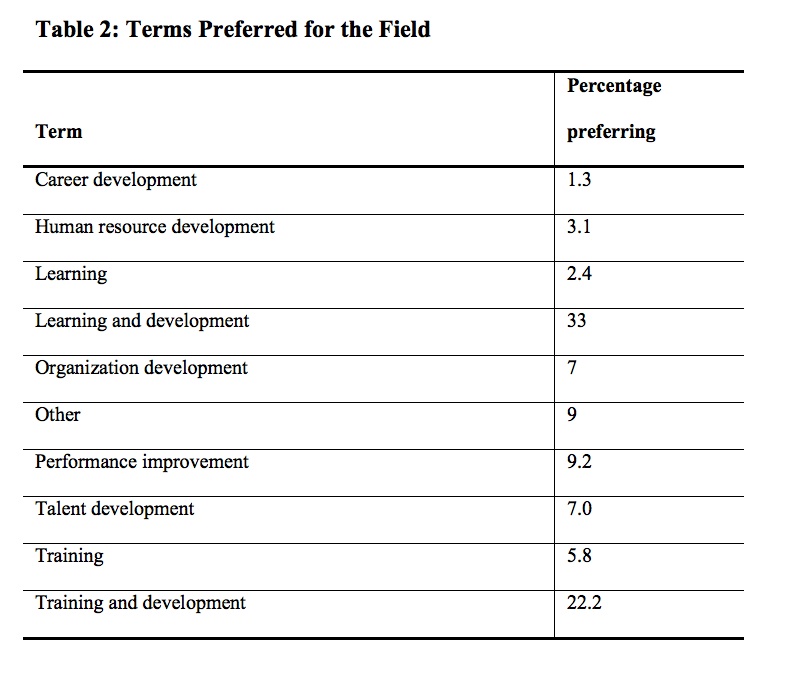
Since at least the 1960s, our field has had issues with the name, “Training.” Perhaps motivated by a desire for change, or perhaps motivated by the successful rebranding of the related field, “Personnel,” as “Human Resources,” we have been trying to rename ourselves ever since.
In 1969, George Washington University Professor Leonard Nadler coined the term, “Human Resource Development.” In the 1970s and 1980s, some organizations referred to their training groups as “Education.” In the 1980s and 1990s, training groups—perhaps influenced by Thomas Gilbert’s 1978 book, “Human Competence: Engineering Worthy Performance,” adopted the performance paradigm, with many incorporating the term, “performance,” into their names. Around the same time, others referred to themselves as “corporate universities.” About the turn of the millennium, the term, “learning,” appeared, sometimes in conjunction with performance, such as Workplace Learning and Performance. Most recently, one professional association rebranded itself as “talent development.” Each of these new names supposes that trainers have responsibilities that extend beyond designing, developing, facilitating, and administering training programs. (See the sidebar at the end of the article that explores the link between names for the field and job responsibilities.)
Although emotions around names run strong and high, empirical evidence supporting the shift from training to any of these other names is thin. A recent search of the literature turned up no studies validating the appropriate name of the field of training, although it contains several opinion pieces and definitions. Private branding studies might have been conducted, but those results are not shared with the broader professional community.
So Training commissioned this study. In it, we explore two issues. First, because different names are supposed to imply different responsibilities, we wanted to see the extent to which the additional responsibilities associated with different names—such as analyzing performance problems and offering career development and organizational development services—actually characterized the work of people in our field. Second, we wanted to explore which terms participants use to describe their work and which terms they prefer to call their work. (To learn how we conducted the survey, see the end of this article.)
RESPONSIBILITIES OF PROFESSIONALS IN OUR FIELD
When identifying the responsibilities of professionals in our field, two categories of responsibilities emerge. The first are traditional training responsibilities, which the Canadian Society for Training and Development (whose competency model is specifically labeled as training and development) identifies as:
- Assessing needs
- Designing training programs
- Facilitating programs
- Supporting the implementation of programs
- Evaluating training
We used this model as the basis for identifying training responsibilities.
The second are additional responsibilities suggested by advocates for other names for the field. For example, advocates for Human Resource development say that term encompasses career and organizational development in addition to training. Advocates for the term, performance, suggest that responsibilities include analyzing and addressing problems of human performance and preparing interventions other than instruction. We identified the one or two key additional responsibilities other than training associated with names for each of the other proposed terms.
We then asked participants whether their organizations offered the services (yes or no) and then asked them to identify the Top 5 services offered by their organizations. In terms of which services organizations provide, the most commonly offered services align with training: 94.3 percent design training programs; 93.6 percent facilitate training programs; 86.1 percent evaluate training programs; and 85.7 percent administer training programs (that is, handle responsibilities such as registration, enrollment, confirmation, and follow-up record keeping).
The next most commonly offered services involve developing materials that complement training and perhaps support its transfer: 82.3 percent develop user guides and similar types of technical content, while 72 percent develop newsletters and internal policies and procedures guides and similar employee communication materials.
The least commonly offered services align with other names for the field: 69.4 percent conduct performance needs assessments for clients; 57.5 percent conduct organizational development projects; 56.6 percent develop promotional videos, brochures, and similar marketing materials; 50.7 percent assess the skills of most employees in the organization; 49.6 percent advise on the usability of software and other products; 46.3 percent develop competency maps for key occupations in the organization; 45.8 percent provide career development services; and 40.3 percent provide strategic consulting services on human resources subjects. Write-in comments suggest that some participants work in organizations that sell broader expertise—such as expertise in an industry or a particular profession such as accounting—and sell training as part of the suite of services offered to customers. Figure 1 shows the services offered by training groups.

Although the groups in which participants work offer a wide variety of services, their core services—the Top 5 that comprise their core workload—align closely to the competencies for training and development professionals identified by the Canadian Society for Training and Development (mentioned previously). The fifth core service is related to designing training programs but outside of the field: developing user guides and similar types of technical content (which could align with the CSTD competency, supporting the transfer of training). The rest of the services are not widely offered, only comprising a Top 5 service for 7 percent or fewer of organizations.
This limited offering of services beyond the core training services is important because one of the justifications for renaming the field is expanding the scope of job responsibilities. A quick scan of the top services offered suggests that, in aggregate, trainers still primarily offer training services.
TERMS FOR OUR WORK
When asked to identify the term that best characterizes the services participants provide individually, more than 43 percent used some variant of the term, “training,” with 32.6 percent saying “training and development” and another 10.6 percent saying “training” best characterizes their work. Another 29.3 percent chose a variant of learning, with 28 percent saying “learning and development” and 1.3 percent choosing “learning.”
None of the other terms suggested for our field garnered more than a 10 percent response, including career development (1.8 percent), Human Resource development (2.4 percent), organization development (5.7 percent), performance improvement (8.4 percent), and talent development (3.5 percent).
When asked to identify the term that best characterizes the services provided by the groups in which they work, participants offered similar responses. Approximately 40 percent used some variant of the term, “training,” with 31.1 percent saying “training and development” and another 9.25 percent saying “training” best characterizes their work. Another 27 percent chose a variant of learning, with 25.3 percent saying “learning and development” and 1.8 percent choosing “learning.”
Fewer than 10 percent of participants chose any of the other terms suggested (see Table 1). The majority of the write-in comments included variations on the terms, learning, performance, education, and training, although a few mentioned operations.

Although terms related to “training” best characterized the services offered by participants, followed by terms related to “learning,” participants preferred terms related to “learning” over terms related to “training.” More than 35 percent preferred some variation of the term, learning, for their individual services (with 33 percent preferring “learning and development” and another 2.4 percent preferring “learning”), while only 28 percent preferred some variation of the term, training (22.2 percent preferring “training and development” and another 5.8 percent preferring “training”).
Once again, all other terms suggested for the field were preferred by fewer than 10 percent of participants. See Table 2. Among the write-in responses were four each for instructional design and learning and performance.

CONCLUSIONS
Based on the profile of work collected and participants’ own characterizations of the services offered by their groups, the term, “training,” seems to remain the most apt to describe the work performed by people in our field. Furthermore, given a choice, although the most preferred term seems to be “learning,” training remains the second most preferred term for the field. “Training” appears to accurately convey the job responsibilities and is better understood than most other terms. The bottom line: Training still matters.
For more survey results, including how participants feel about the role of talent development in their organizations and their impressions of the relationship between talent development and training, visit: http://www.trainingmag.com/talent-development-vs-training
Names for Our Field and the Implied Responsibilities
Most changes in name for our field also are tied to an implied or explicit change in responsibilities. Consider these:
Human Resource Development (HRD): Assumes that Training is part of a larger effort to develop people within an organization. These additional efforts include career development and organizational development. People who advocate for the term, HRD, refer to the combined grouping as a “three-legged stool.”
Learning and Development: Wikipedia suggests that learning and development is a synonym for training and development. In fact, entering learning and development in the online encyclopedia redirects to the training and development entry, which provides no separate definition of the term but states that it is the preferred term of the UK professional association, Chartered Institute for Personnel and Development.
Performance: Assumes that the primary responsibility of our field is improving the performance of organizations by identifying barriers to performance at the individual, unit, and organizational level and developing appropriate interventions—of which training is just one—to address these performance barriers.
Talent Development: According to Wikipedia, “talent development is the process of changing an organization, its employees, its stakeholders, and groups of people within it, using planned and unplanned learning, in order to achieve and maintain a competitive advantage for the organization.”
About This Study
We invited members of the Training magazine community via e-mail to participate in the study over a five-week period late January to early March 2015. We received 454 usable responses (all responses were anonymous).
Nearly three-quarters of participants (74.9 percent) are employed by organizations whose primary business is something other than training and development. Another 11.7 percent are employed by organizations that provide training and development services; another 6.6 percent are self-employed; and 4 percent are contractors placed on work assignments through an agency.
In terms of their job roles, nearly one-third (32.8 percent) are training managers, followed by instructional designers (18.5 percent), learning consultants (15.4 percent), and instructors (8.6 percent).
Participants represented every industry, but those in government and military (13.2 percent), finance and banking (11.4 percent), health and medical services (9.7 percent), higher education (8.4 percent), professional services (7.3 percent), and manufacturing 7 percent) were most common. Participants primarily hail from North America (96.6 percent).
Saul Carliner, Ph.D., is Research director for Lakewood Media and an associate professor of Educational Technology at Concordia University in Montreal.
David William Price is a Ph.D. student specializing in Educational Technology at Concordia University.


